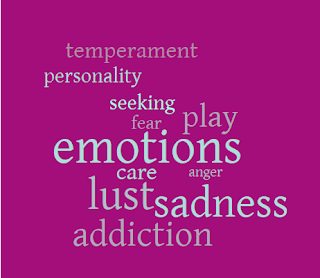On 25 January 2018 Dr Lachlan Tiffen was admitted to the
degree of Doctor of Philosophy with his thesis successfully examined and
completed with minimal changes required. Lachlan thesis, Individual
Difference in Substance Use and Emotion, integrated a wide body of research
from Jaak Panksepp’s affective neuroscience model of discrete emotions, the
self-medication hypothesis, and personality.
The guiding research question
was ‘why do some people transition to harmful substance use while others do
not’. The thesis centred on translating substance related knowledge from
affective neuroscience, through a discrete emotion systems model (Panksepp,
1998), to clinical psychology nomenclature. The framework came from Self
Medication Hypothesis (SMH; Khantzian, 1997) propositions that the foundation
of addiction vulnerability was dysfunctional self-regulation manifest in
personality, which had psychopharmacological specificity.
The research program
contained three studies, each exploring one of three aspects of emotion
enquiry; subjective experience, behaviour and physiology (Mauss, Levenson,
McCarter, Wilhelm & Gross, 2005) in relation to substance involvement risk.
Study 1 examined subjective experience of personality, temperament, emotional
regulation and parenting. Study 1 identified emotion related constructs that
significantly correlated to and regressions models that could predict
significant variability in participants’ involvement with various substances.
Study 2 piloted a behavioural categorisation of International Affective Picture
System (IAPS; Lang, Bradley & Cuthbert, 2008) stimuli. Study 2 produced
image sets representing one neutral and seven discrete emotions providing
preliminary support for dual, discrete and dimensional, models of emotion.
Study 3 used these image sets to elicit electrodermal activity in a pilot
experiment exploring links between participant substance involvement and
psychophysiological response to emotional stimuli. Study 3 indicated some
differentiation of electrodermal activity components between various substance
types, however, results were tentative.
The research program evidence
recommends separate analysis by gender and specific substances in future
addiction research. It also provided evidence supporting reconceptualised SMH
propositions. Although the translation of affective neuroscience through
personality required refinement, other individual difference constructs that
related to substance use offer interesting avenues for further investigation.
This was the real legacy of the thesis; providing unique insights built on
diverse, but interrelated foundations to act as guidance for future research
into this most insidious and elusive problem for society.
Congratulations Dr Tiffen!
(Primary Supervisor Miles Bore, Co-Supervisor Frances
Martin)


